Facilities & Equipment

Ronald R. Rhein Environmental Study Area
A thirty-acre parcel of land, near the Kutztown University campus, taken out of agriculture more than 30 years ago is maintained as an ecological preserve and study area. Environmental science, ecology, botany, entomology, and limnology courses regularly use the preserve as an outdoor laboratory. In addition, faculty and students often conduct research at the preserve.
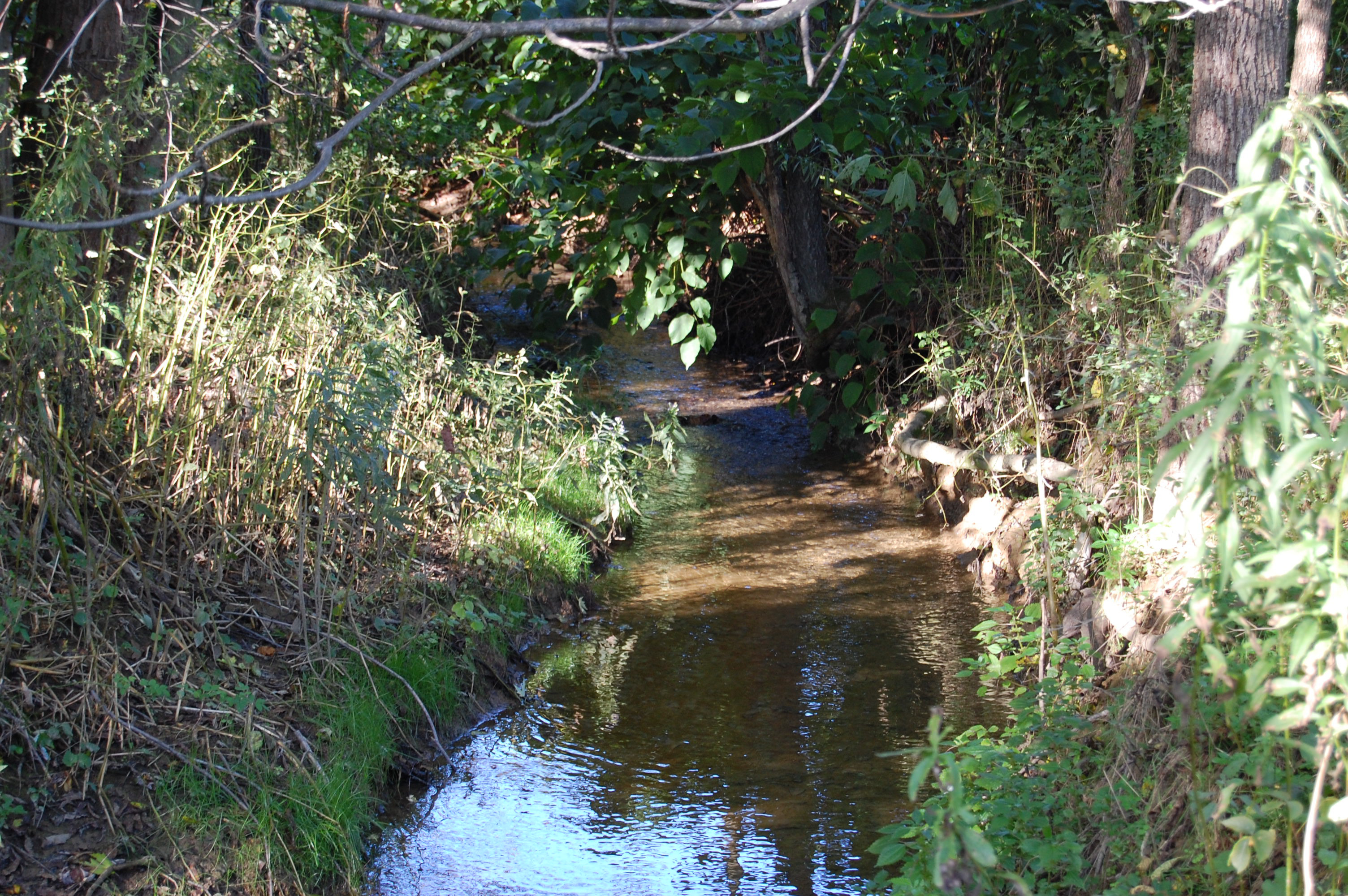
Protected Wetlands
Kutztown University's Pennsylvania German Cultural Heritage Center is the site of a protected wetland that is used as an instructional resource and on-campus research site used by faculty in their courses.
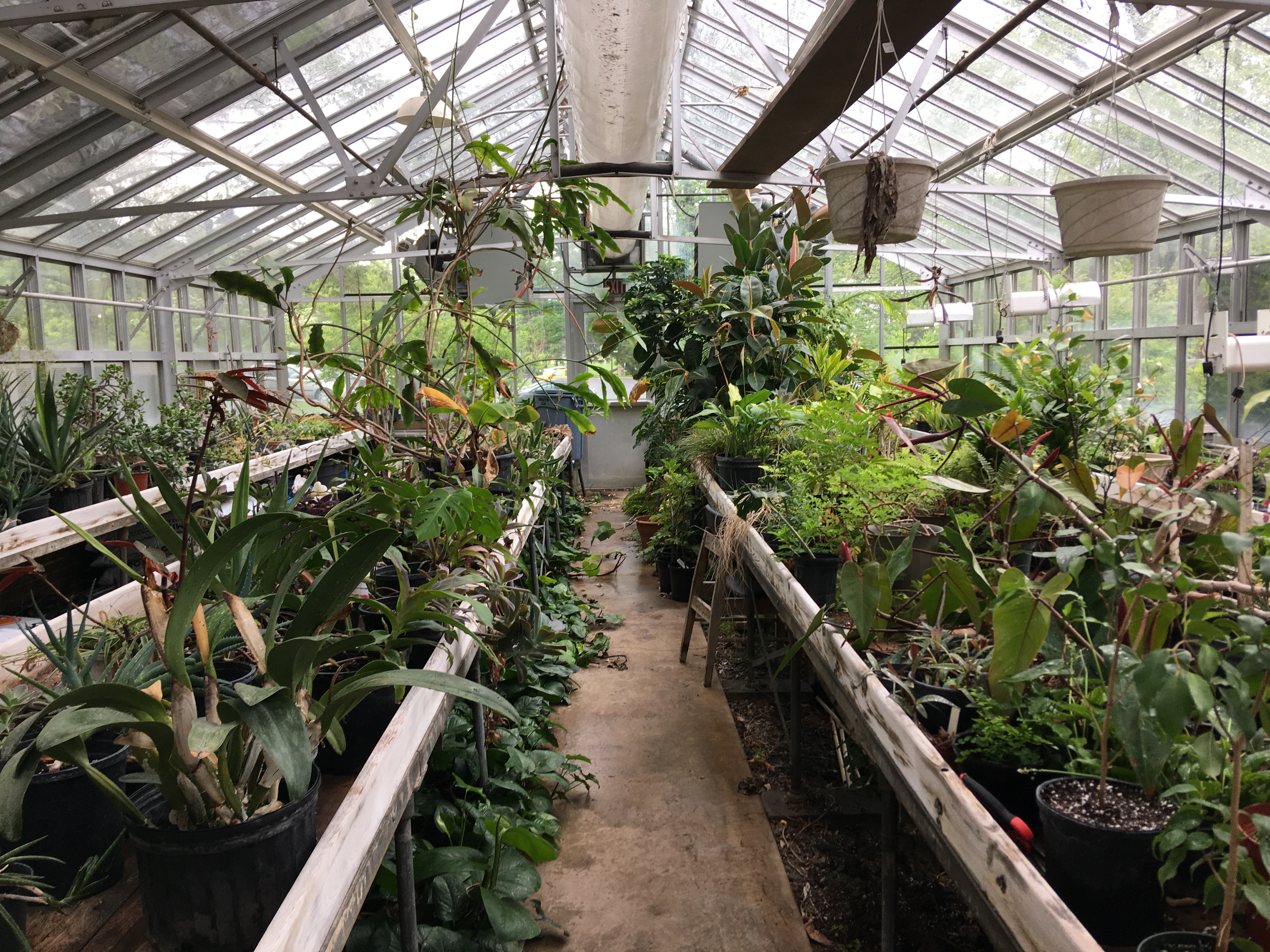
Greenhouse
This modern greenhouse facility is used to support botany and ecology courses as well as faculty and student research projects. The greenhouse is primarily maintained by students.
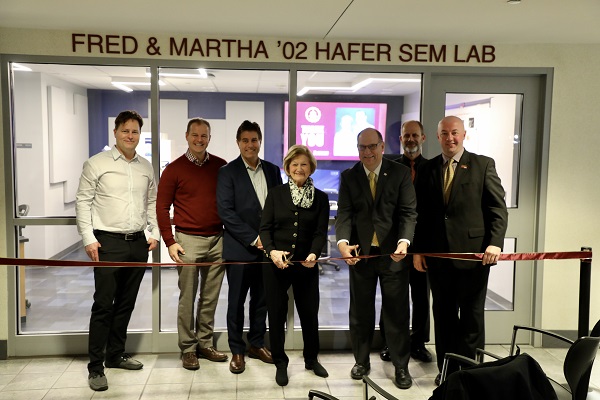
Scanning Electron Microscope (SEM) Lab
This cutting-edge facility is used for a number of student and faculty research projects aimed at investigating the surface topography and chemical composition of very small specimens.
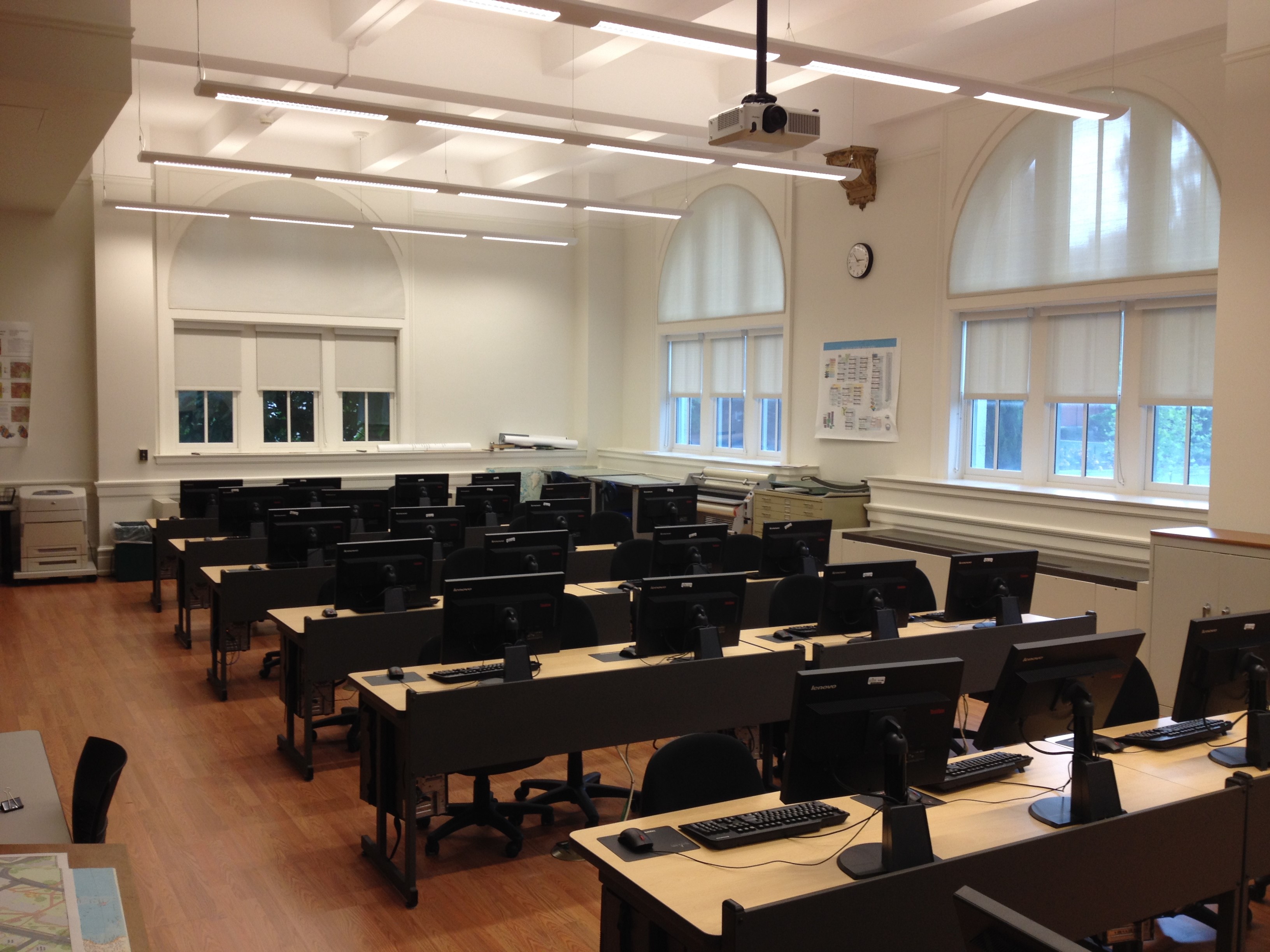
Geographic Information System Labs
This lab space in the Graduate Center Room 100 features 24 PCs equipped with ArcGIS, ArcGIS Pro, and ERDAS Imagine remote sensing software. The lab also supports a color laserprinter, a large-format color printer, and a laminating machine. There is also a second nearly equivalent lab space in Boehm Science Building Room 104.

Digital Microscopy Lab
This lab space features a suite of Zeiss and Nikon digital microscopes that are used by students in numerous courses within the biology department.
FIELD & Laboratory equipment
A wide variety of scientific equipment is used to answer questions regarding the environment. Kutztown’s Environmental Science curriculum provides students with opportunities to gain extensive hands-on experience with these scientific tools through lab-based coursework and research projects. For more details on the operation of and how the spectrophotometers, chromatographs, and mass spectrometers are used in our curriculum, please click here.
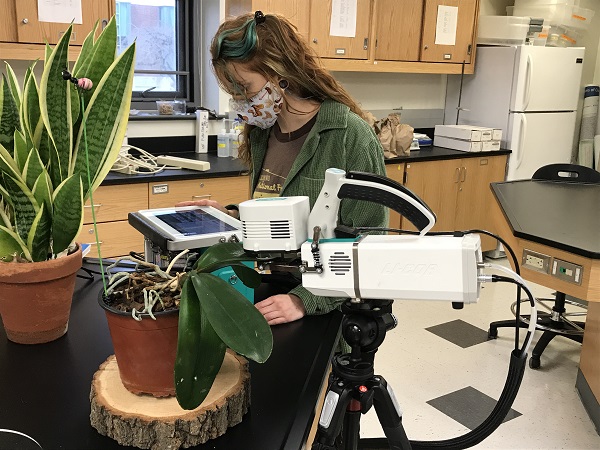
Li-COR Photosynthesis Analyzer
The Licor 6400 portable photosynthesis system allows students to measure photosynthesis as it happens in the lab and in the field.
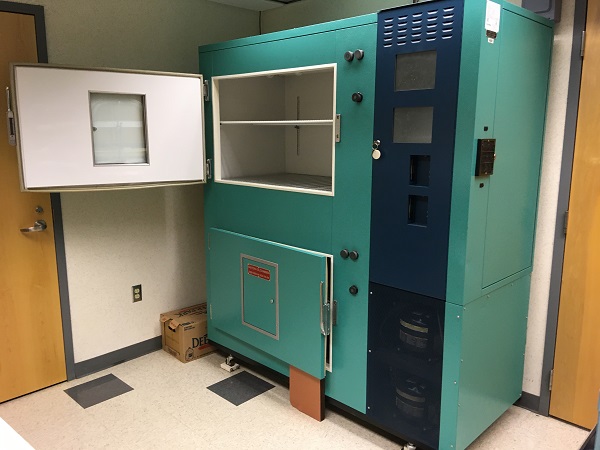
Carbon Dioxide Enrichment Growth Chamber
The Conviron Carbon Dioxide Enrichment chamber allows students to explore the physical and chemical response of plants and invertebrate herbivores to changes in the atmospheric concentration of greenhouse gases.
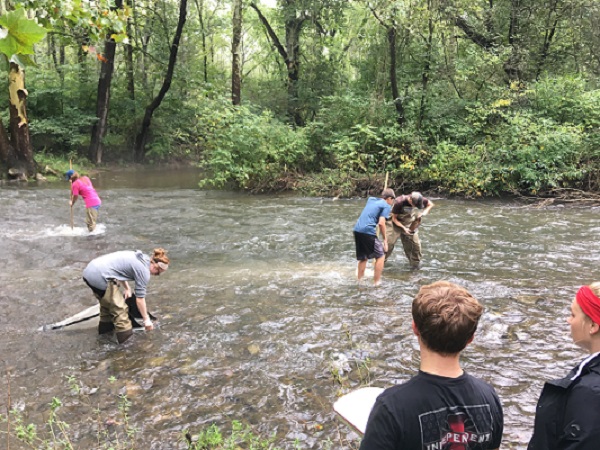
Surber Sampler and D-nets
Students use Surber samplers, D-nets, and other water quality assessment equipment to monitor the health and dynamics of the Sacony Creek watershed.
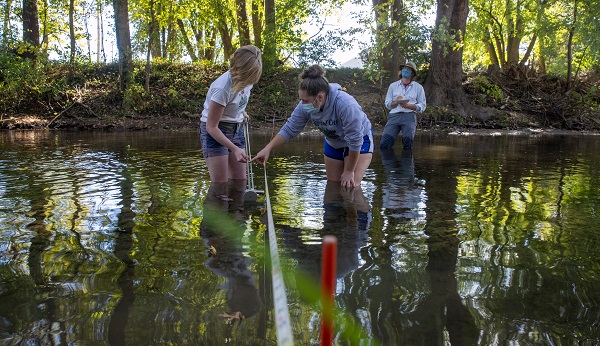
Top-setting wading rod and current meter
Students measure the total width of the creek channel and divide into equal segments. The stream velocity is measured at 60% of depth within each segment using a Marsh McBirney current meter. These measurements allow students to calculate the discharge rate for the total flow of the stream.
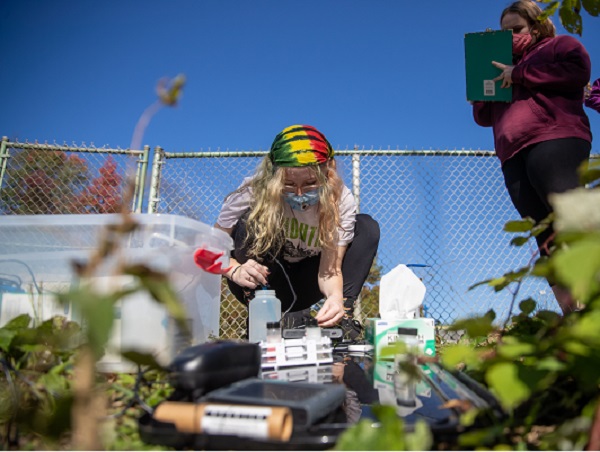
Vernier LabQuest data acquisition devices and probes
A suite of Vernier probes are used in the field to measure temperature, dissolved oxygen, pH, nitrates, turbidity, and conductivity.
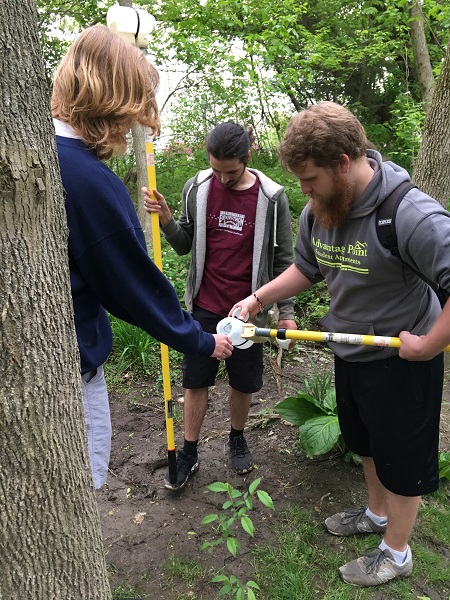
Swing Sampler
A swing sampler allows collection of water without having to wade into the stream disturbing sediment.
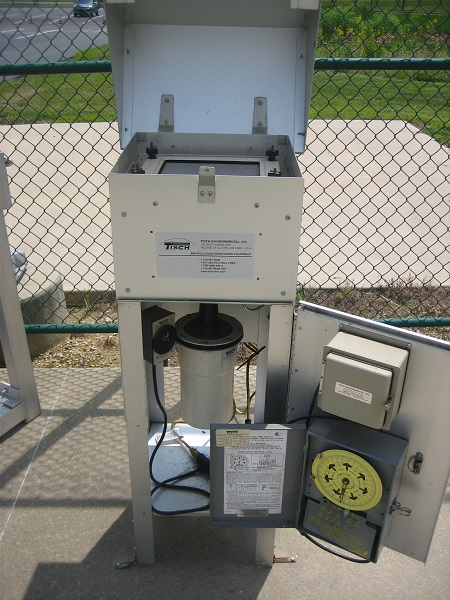
Hi-Volume Air Sampler
The hi-volume air sampler is used to collect ambient total suspended particulate matter typically in a 24 hour time period. The filter sample can then processed in the lab to determine the chemical composition of the particulate matter.
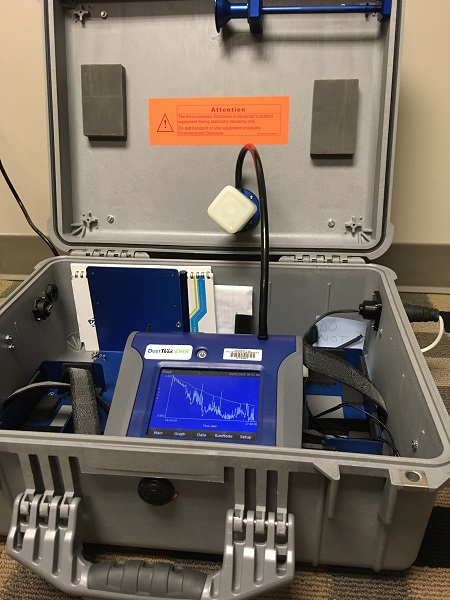
DustTrak Aerosol Monitor
The DustTrak Aerosol Monitor measures particulate matter mass concentrations in real-time at indoor or outdoor locations.
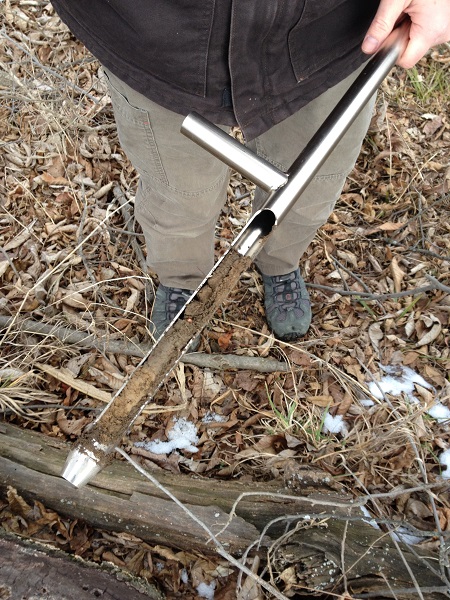
Soil Corer or Sampler
A soil corer or sampler is used to collect soil samples from a depth of about 10-12 inches.
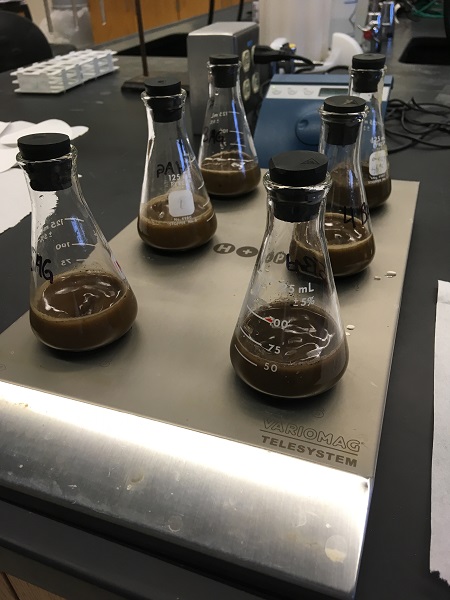
Multi-stirrer plate
The multi-stirrer plate saves time and space allowing for simultaneous magnetic stirring of 6 samples.
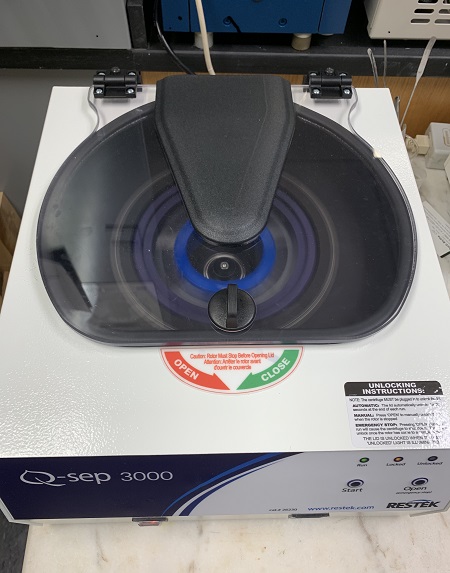
Q-sep 3000 centrifuge
This centrifuge is employed in the QuEChERS extraction technique to separate pesticides from various food matrices.
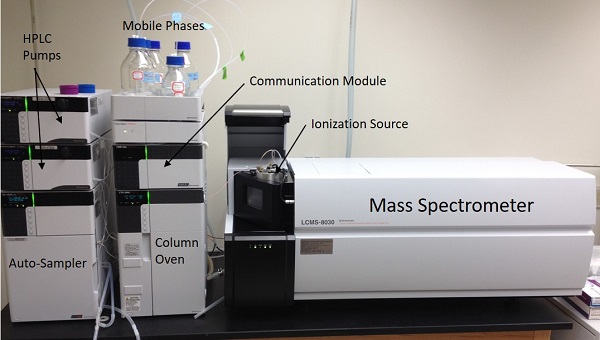
Liquid Chromatograph-Triple Quadrupole Mass Spectrometer (LC-MS/MS)
The liquid chromatograph (LC) front end of this system separates molecules from liquid mixtures, and the very powerful mass spectral detector is capable of determining sub-part per billion concentrations of those molecules. Students at KU are currently using this unique instrumentation in courses and research to analyze pesticides and drugs.
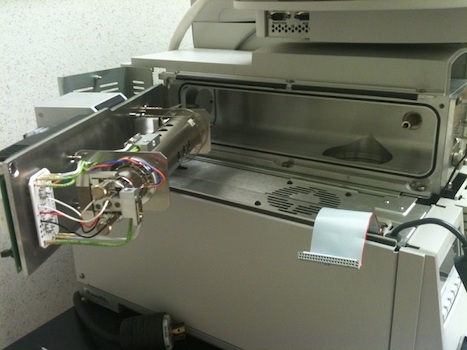
Inside the Agilent Quadrupole Mass Spectrometer paired with a Gas Chromatogram (GC-MS)
The GC-MS is a workhorse instrument in the environmental field for analysis of volatile and semivolatile organic compounds. The GC front side of the instrument separates components in a gas mixture, and the mass spectral detector acts as a mass filter only allowing one mass-to-charge ion to the detector at one time.

Inside the Gas Chromatograph
The basic components of a gas chromatograph consist of an autosampler, split/splitless injector, capillary column (shown in the middle of the photo) inside an oven, and a detector. The flame ionization detectors (FID) fitted on this instrument use the process of ionization in a hydrogen-gas flame to create ions of the separated carbon-containing molecules from the sample.
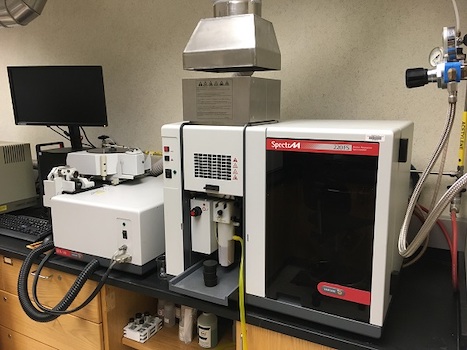
Atomic Spectrophotometer
If you like fire, this metals analysis technique is for you! A high-energy flame or a graphite furnace is used to get metal atoms from the aqueous phase to the gas phase very quickly. Those atoms are then in the proper state to absorb a specific wavelength of light, or in some cases, those atoms emit light on their own having been promoted to an excited state. The more absorbance or emission of light directly relates to the concentration of the metal atom in the sample. A favorite lab experiment of KU students is analyzing the wear metals in used motor oil to diagnose vehicle engines.
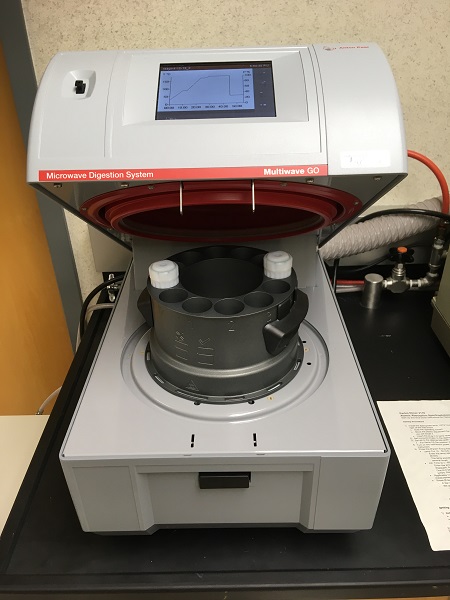
Microwave Digestion System
The Multiwave GO microwave digestion system heats samples in concentrated acids in order to breakdown and extract metals from within organic matrices. A key advantage of the microwave system over traditional methods is that up to 12 samples can be prepared simultaneously in a significantly reduced time period. This system has been used to prepare soils, vitamins, filter papers, cigarettes, metal shavings, and even granola bars for metals analysis.
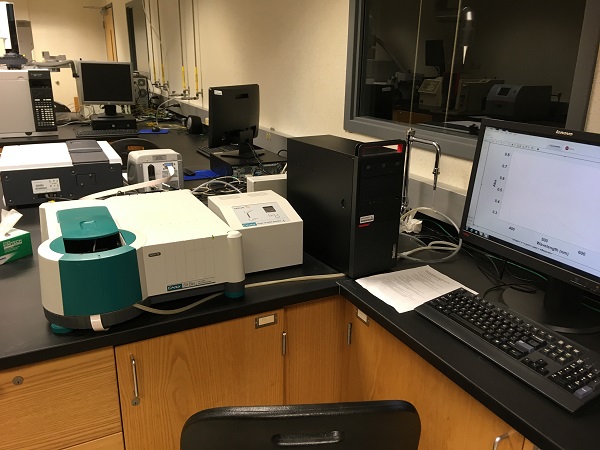
Ultraviolet-Visible Spectrophotometers
The UV-Visible spectrophotometer is user-friendly, simple, and rapidly scans a 300-400 nm wavelength range in seconds. It is also a workhorse instrument in the environmental field with applications from analysis of ozone in air to arsenic, chromium, and surfactants in water.

Genesys10 Spectrophotometer
The Genesys10 UV-Vis spectrophotometers measure the absorbance of light through samples and are great for work at a single wavelength. Here a set of solution standards prepared in volumetric flasks are quickly measured providing the data necessary to generate Beer's Law plots for calibration purposes.
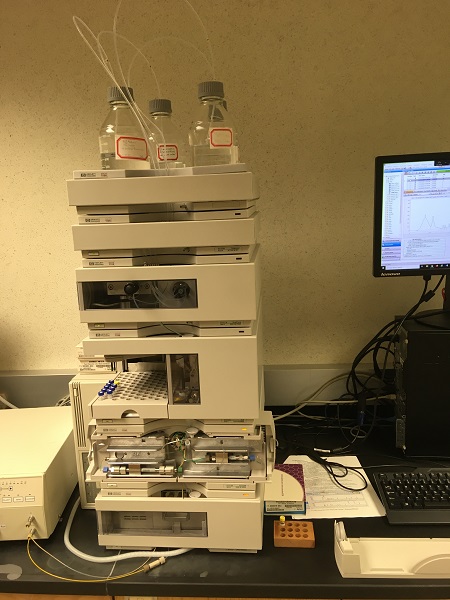
High Performance Liquid Chromatograph (HPLC)
The fully automated Agilent 1100 HPLC systems utilize UV-visible detectors to quantify organic molecules that absorb light in the UV or visible range. Depending on the unique interaction of the molecules with the column's stationary phase and solvent mobile phase, the individual compounds are represented by distinguishable peaks or signals in a graph called a chromatogram.
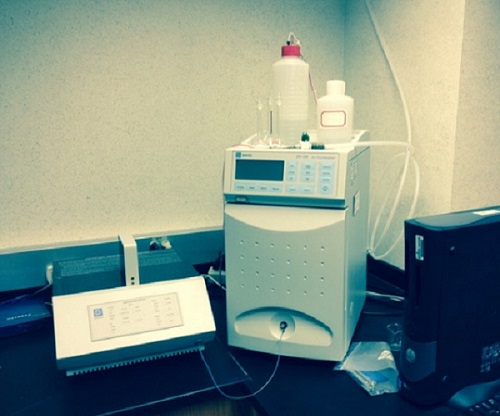
Ion Chromatograph (IC)
The Dionex DX-120 Ion Chromatograph (IC) is used to separate dissolved ions, such as chlorides, nitrates, sulfates, and phosphates, from various liquid samples in order to determine each individual ion's quantity. This instrument is often employed in water and wastewater analyses.


























